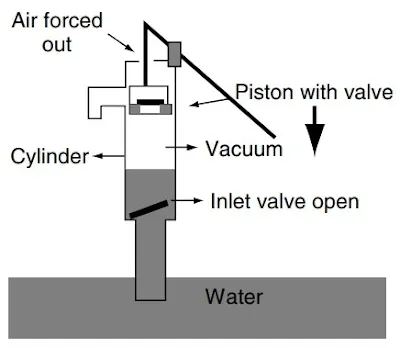The History of Pumps for transfer of liquids against gravity existed from time immemorial. A pump is one such device that expends energy to raise, tra
The ancient Egyptians invented water wheels with buckets mounted on them to transfer water for irrigation. More than 2000 years ago, a Greek inventor, Ctesibius, made a similar type of pump for pumping water. During the same period, Archimedes, a Greek mathematician, invented what is now known as the ‘Archimedes’ screw’ – a pump designed like a screw rotating within a cylinder. The spiraled tube was set at an incline and was hand operated. This type of pump was used to drain and irrigate the Nile valley. In 4th century Rome, Archimedes’ screw was used for the Roman water supply systems, highly advanced for that time. The Romans also used screw pumps for irrigation and drainage work. Screw pumps can also be traced to the ore mines of Spain. These early units were all driven by either man or animal power.
The mining operations of the Middle Ages led to the development of the suction (piston) pump, types of which are described by Georgius Agricola in De re metallica (1556). Force pumps, utilizing a piston-and-cylinder combination, were used in Greece to raise water from wells. Adopting a similar principle, air pumps operated spectacular musical devices in Greek temples and amphitheaters, such as the water organ.Applications
Times have changed, but pumps still operate on the same fundamental principle – expend energy to raise, transport, or compress liquids. Over time, the application of pumps in the agricultural domain has expanded to cover other domains as well. The following are a few main domains that use pumps extensively:
- Water supply: To supply water to inhabited areas.
- Drainage: To control the level of water in a protected area.
- Sewage: To collect and treat sewage.
- Irrigation: To make dry lands agriculturally productive.
- Chemical industry: To transport fluids to and from various sites in the chemical plant.
- Petroleum industry: Used in every phase of petroleum production, transportation, and refinery.
- Pharmaceutical and medical field: To transfer of chemicals in drug manufacture; pump fluids in and out of the body.
- Steel mills: To transport cooling water.
- Construction: Bypass pumping, well-point dewatering, remediation, and general site pumping applications.
- Mining: Heavy-duty construction, wash water, dust control fines and tailings pumping, site dewatering, groundwater control, and water runoff








